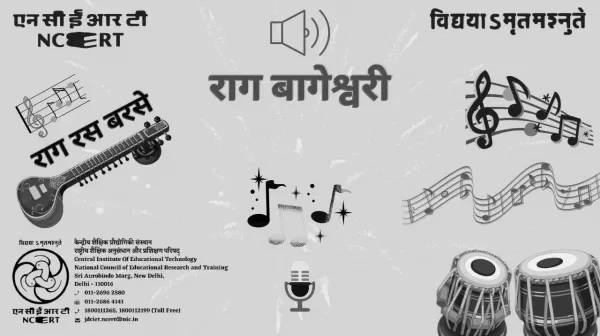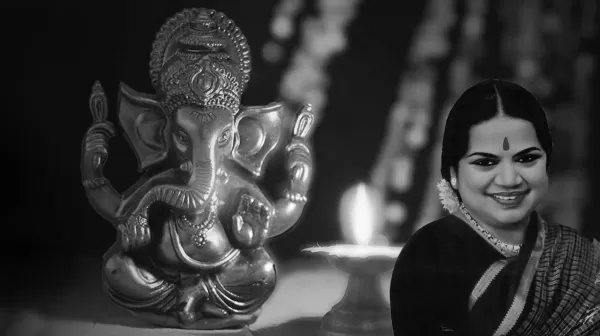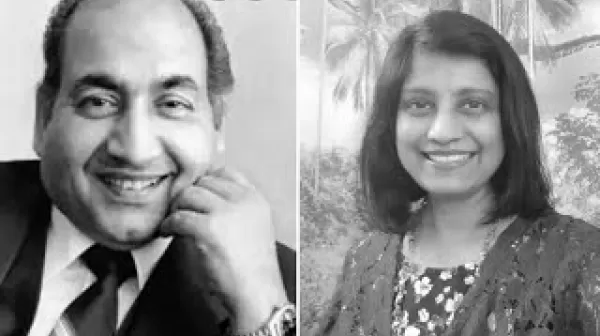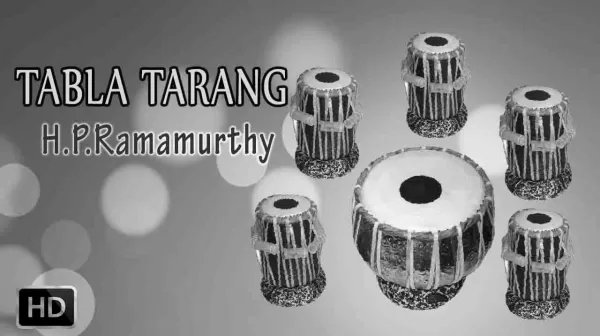राग
Classical Instrumental (Fusion) ❤️ Raag Madhuvanti ❤️ Ateetam ❤️ Tabla❤️Sitar❤️Flute❤️Keyboard
Madhuvanti Raaga - Madhuvanti is the name of a raga used in Indian classical music. It is a Hindustani music raga, which is reported to have been borrowed into Carnatic music, and is structurally similar to Multani. This Raag is based on Kalyan Thaat(Mode).It is a romantic raga based on the foundation, eternity and colors of love. Madhu literally means honey. It is a very sweet raga with a very simple philosophy of love and romance. Sounds of Traditions Past, Energies of Momentous Present, and Imaginations of Futures Beyond, the musical creations of ATEETAM.
Carnatic Vocal ❤️ Annamacharya Krithis ❤️ Parama Purusa Nirupamana ❤️ Nithyasree Mahadevan
Annamacharya Kritis - The musical form of the keertana songs that he composed, which are still popular among Carnatic music concert artists, have strongly influenced the structure of Carnatic music compositions. Annamacharya is remembered for his saintly life, and is honoured as a great devotee of Vishnu by devotees and saintly singers. Nithyasree Mahadevan, also referred to as S. Nithyashri, is an eminent Carnatic musician and playback singer for film songs in many Indian languages.
Carnatic Vocal ❤️ Kuzhaloodhi Manamellam ❤️ Sri Krishna Gaanam ❤️ S.Sowmya
Carnatic Music is one of world's oldest and richest musical traditions. It primarily comprises a monophonic song based on improvised variations. The melody infused ragas called alapana are introduced and developed gradually. It begins with Varnam a warm up of sort for the musicians followed by exchange of ragas and thalas intermixed with kritis and pallavi. S. Sowmya is a Carnatic music singer. She learnt music initially from her father Dr. Srinivasan, and later from Dr. S. Ramanathan and Smt.T. Muktha.
Vatapi Ganapathim ❤️ Ganesh Chaturthi Special Mantra ❤️ S.Sowmya ❤️ Carnatic Vocal
Vatapi Ganapathim | Ganesh Chaturthi Special Mantra | S.Sowmya | Carnatic Vocal Carnatic Music is one of world's oldest and richest musical traditions. It primarily comprises a monophonic song based on improvised variations. The melody infused ragas called alapana are introduced and developed gradually. It begins with Varnam a warm up of sort for the musicians followed by exchange of ragas and thalas intermixed with kritis and pallavi. S. Sowmya is a Carnatic music singer. She learnt music initially from her father Dr. Srinivasan, and later from Dr. S. Ramanathan and Smt.T. Muktha.
Classical Instrumental (Fusion) ❤️ Kedaram ❤️ Ateetam ❤️ Tabla❤️Sitar❤️Flute❤️Keyboard
Kedaram - Kedaram (pronounced kedaram) is a rāgam in Carnatic music (musical scale of South Indian classical music). It is a derived scale (janya rāgam) from Shankarabharanam, the 29th Melakarta rāgam. Kedaram is similar to Natbehag of Hindustani classical music. The Kedar of Hindustani music belongs to Kalyan thaat and is quite different from Kedaram. Sounds of Traditions Past, Energies of Momentous Present, and Imaginations of Futures Beyond, the musical creations of ATEETAM. The music of India includes multiple varieties of folk music, pop, and Indian classical music.
Carnatic Vocal ❤️ Needhan Mechi Kolla ❤️ Sri Krishna Gaanam ❤️ S. Sowmya
Carnatic Music is one of world's oldest and richest musical traditions. It primarily comprises a monophonic song based on improvised variations. The melody infused ragas called alapana are introduced and developed gradually. It begins with Varnam a warm up of sort for the musicians followed by exchange of ragas and thalas intermixed with kritis and pallavi. The main emphasis in Carnatic music is on vocal music; most compositions are written to be sung, and even when played on instruments, they are meant to be performed in gāyaki (singing) style. S. Sowmya is a Carnatic music singer.
Classical Vocal ❤️ Parvathi Nayakane ❤️ Paramashiva ❤️ Sandeep Narayan
Carnatic music is a system of music commonly associated with the southern part of the Indian subcontinent, with its area roughly confined to four modern states of India: Andhra Pradesh, Karnataka, Kerala, and Tamil Nadu. Sandeep Narayan is a disciple of the well acclaimed musician, Sri Sanjay Subrahmanyan. Although he was born and raised in Los Angeles, California, he spends most of his time pursuing a career in music based out of Chennai, India. He has won several awards and accolades, and is an A grade artist of All India Radio, Chennai.
Meera Bhajan ❤️ Maarare ❤️ Classical Instrumental (Fusion) ❤️ Ateetam ❤️ Sitar ❤️Tabla ❤️Flute ❤️Keyboard
Classical music is art music produced or rooted in the traditions of Western music (both liturgical and secular). It encompasses a broad span of time from roughly the 11th century to the present day. Sounds of Traditions Past, Energies of Momentous Present, and Imaginations of Futures Beyond, the musical creations of ATEETAM. The music of India includes multiple varieties of folk music, pop, and Indian classical music. India's classical music tradition, including Hindustani music and Carnatic, has a history spanning millennia and developed over several eras.
Carnatic Vocal ❤️ Vigna Vinayaka ❤️ Om Sri Gananayaka ❤️ S.Sowmya
Carnatic music is a system of music commonly associated with the southern part of the Indian subcontinent, with its area roughly confined to four modern states of India: Andhra Pradesh, Karnataka, Kerala, and Tamil Nadu. It is one of two main sub genres of Indian classical music that evolved from ancient Hindu traditions; the other sub genre being Hindustani music, which emerged as a distinct form because of Persian and Islamic influences in North India. S. Sowmya is a Carnatic music singer. She learnt music initially from her father Dr. Srinivasan, and later from Dr. S.
Classical Vocal ❤️ Paramashiva ❤️ Shri Mathrubhootham ❤️ Sandeep Narayan
Carnatic music is a system of music commonly associated with the southern part of the Indian subcontinent, with its area roughly confined to four modern states of India: Andhra Pradesh, Karnataka, Kerala, and Tamil Nadu. It is one of two main sub genres of Indian classical music that evolved from ancient Hindu traditions; the other sub genre being Hindustani music, which emerged as a distinct form because of Persian and Islamic influences in North India.










